Squatting's Biggest Double Standard - The Pistol Squat
Check out The Movement Fix on Instagram @themovementfix
Need more hip and low back mobility? Start with Day 1 of our Hip/Low Back Mobility Program for free:
Overview
The pistol squat is the biggest double standard exercise we have. The rules that we apply to double legged squats should apply to single legged squats or more specifically, pistol squats.
There are two categories of training where we find the pistol squat:
- Movement Training
- Conditioning training
What we are talking about in this article is using the pistol squat for conditioning training, not movement training. There is no arguing that there are reasons to train a pistol for balance, coordination, body control, etc.
So what IS the double standard?
There are basically 3 main principles in squatting that I want an athlete to meet to consider it "good". Those are:
- Heels stay down
- Knee tracks over the middle to the outside of the foot
- Spine stays neutral
If someone was doing an air squat and their low back and upper back were rounded at the bottom, would you say "oh nice, that looks good!"? Of course not. We know we don't want to lose spinal positioning in the air squat, a back squat, or any other squat variation.
So how come when we use pistols instead of air squats we completely ignore the fact that everyone's low back and upper back is rounded at the bottom?
We sit there and go "wow those pistols look great" just because they got deep. But HOW they got deep in the pistol matters. Do we not see that their back is rounding?
The principles of good squatting shouldn't change whether you're standing on one leg or two legs. Why do we turn a blind eye when we are on one leg?
When we're doing high rep squatting, deadlifting, olympic lifting, etc, we want the lumbar spine to be kept in neutral to prevent low back injury. Most injuries in the low back are when it moves too much and we essentially end up with an overuse injury.
Why Does the Low Back Round More in a Pistol?
One of the reasons pistols lead to nearly everyone's low back rounding is hip anatomy. A squat is a game of balance. When you go from two legged to one legged squatting, your single foot has to be directly under your center of mass. This requires that the hip be relatively more adducted and internally rotated than a double legged squat.
So what? Hip flexion is reduced more in this internally rotated and adducted position due to the orientation of the hip socket. Some people have a hip socket that can better accommodate this motion than others. To see some cool pictures of hips to help this make more sense, check out this article on why we squat differently.
The Squat is a Balance Game
In order to not fall down in a pistol, your body weight has to be balanced over your foot. Since the hip in a lot of people is blocked at a certain degree of hip flexion in a pistol due to the anatomy mentioned above, you have to make that motion up somewhere else in order to stay balanced over your foot and gain depth.
There are two primary places where this motion happens:
- The ankle
- The spine
If you lack ankle or hip range of motion, either your heel will have to lift off the ground or you will curl your spine. This is all in an attempt to keep balanced over your foot.
The movement will occur wherever it's easiest and through the path of least resistance
As you descend into the pistol, if it becomes relatively easier for your body to move through the spine than the hip/ankle, then the back rounds. It's a matter of relative joint mobility, stiffness, and your pattern.
Are you saying don't pistol for high reps?
Yes, that is exactly what I am saying IF you don't have the ankle and hip range to not round your back. I would say the same thing about an air squat if someone rounded their back every time they squatted, wouldn’t you?
Just because squatting on one leg looks cool doesn't mean it makes sense to do for conditioning. Pistol squatting with a rounded back makes as much sense as air squatting with a rounded back.
Examples
In this first picture, you can see that Alanna's lumbar spine stays in its neutral position and her lordosis doesn't reverese.
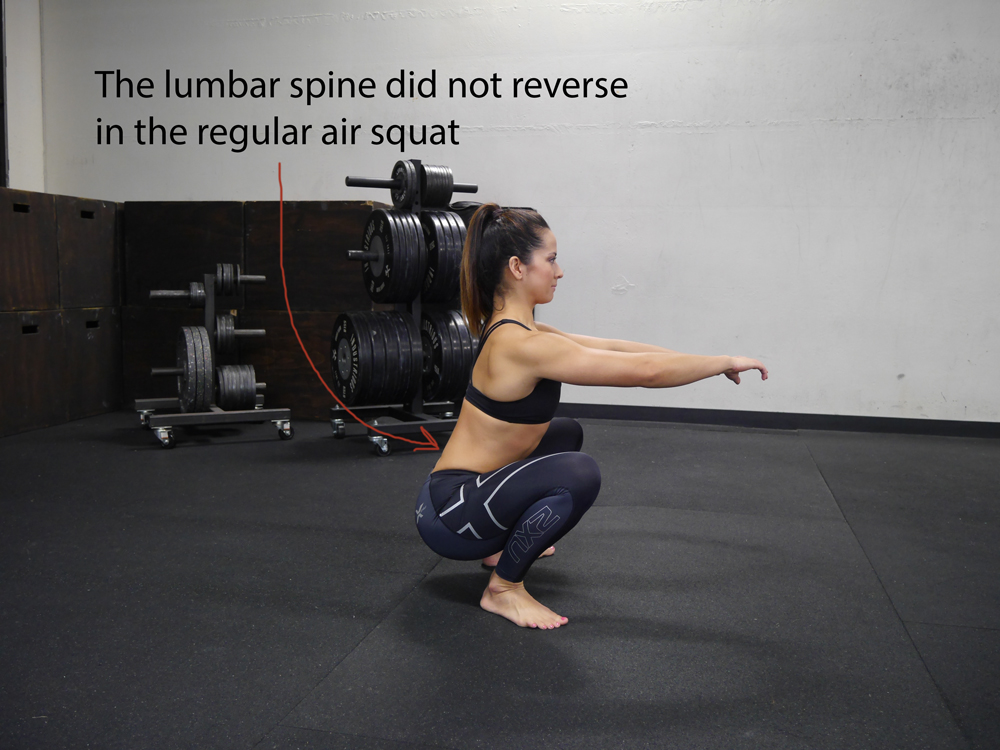
In this second picture when she is doing a pistol, you can see that she loses her lumbar spine positioning and her lumbar curve reverses. Alanna's loss of lumbar lordosis in the pistol is mild in comparison to what you will see when you start analyzing this among other people. She has a lot of ankle and hip mobility that allow her to gain pistol depth, but even with her mobility, she still has to round her lumbar spine to get there.
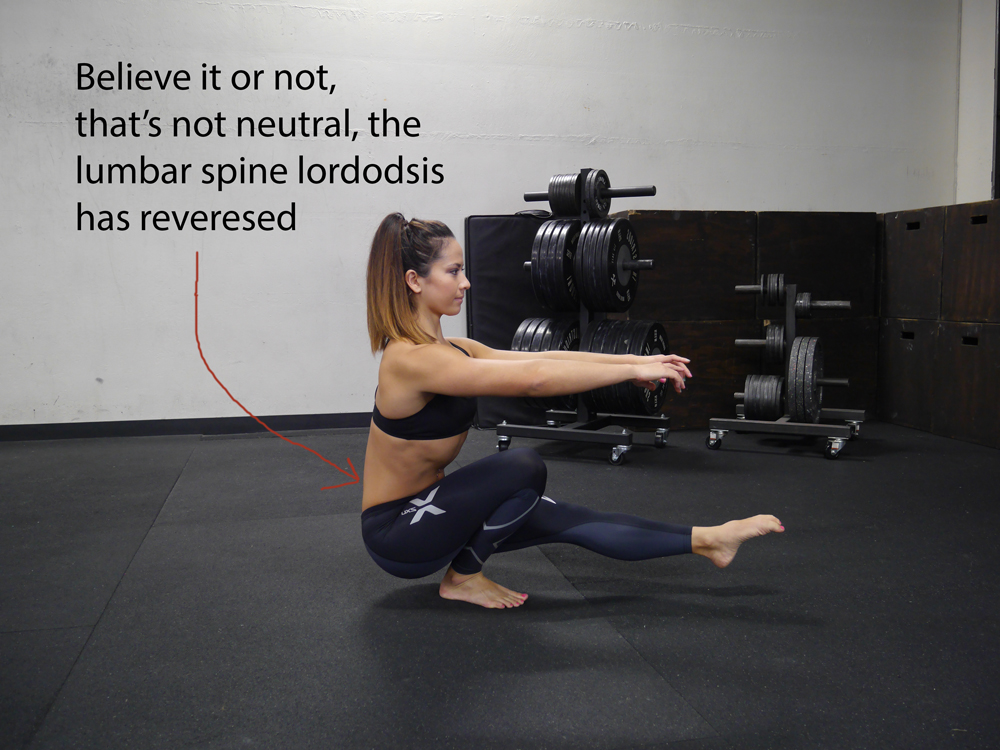
So what can we do instead?
Bulgarian split squats or rear foot elevated split squats! You can still get a ton of strength on one leg without having your low back round. See the end of the video at the top of the article for a brief look at the split squat if you are unfamiliar with it.
But I want to work on my pistols!
Pistols aren't inherently bad. Low back rounding and losing squatting mechanics is the issue in high reps with intensity. If we can work on hip mobility and ankle mobility to improve the pistol, then let's do it! But don't put yourself at risk of back injury for the sake of doing pistols in a workout.
Research tells us that the spine loses 17% of its ability to resist flexion after repetitive rounding. That means if you do a workout with pistols and deadlifts, you could potentially be losing 17% of your spine's ability to resist flexion while deadlifting. Not good.
Here is a video showing how to work your ankle range of motion
Here is a video working on squat mobility
Remember, this article is about using the pistol for strength and conditioning training. In those applications, we should judge it by the same standards as the air squat.
In "movement training", it makes sense to allow the lumbar spine to round in a pistol. It is normal range of motion for the lumbar spine. When we start allowing that to happen during strength and conditioning training though, we run into problems. So...
Let's judge all squats equally!!
What to Read Next
Commonly Misunderstood Words in Movement and Mobility
Commonly Misunderstood Words in Movement and Mobility In this post I will be sharing my thoughts on common words used in the movement and fitness world with a focus on how to better define them conceptually, and where applicable, mathematically. Each day...
How to Stretch Shoulder Extension
How to Stretch Shoulder Extension Learn how to stretch your shoulder extension Want better shoulder mobility? Download Day 1 of our Shoulder Mobility Program for free: Option 1 For many people, option 1 will be the best option, especially if...
Three Position Band Pull Apart
Learn how to correctly perform the 3 position band pull apart to improve your shoulder and upper back strength and mobility
Why Shoulders HAVE to Move Differently
All shoulders have to move differently and stretching won't fix every problem. Learn how the anatomy affects overhead lifting.
Get all our latest articles sent directly to your inbox
Comments

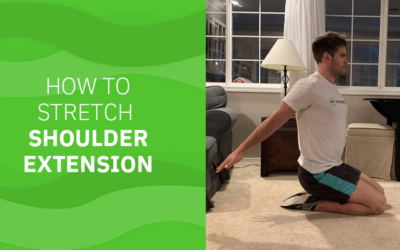
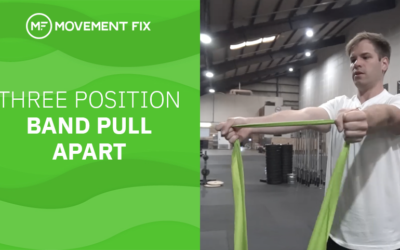
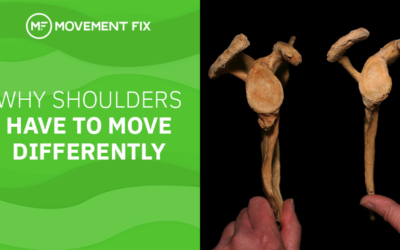
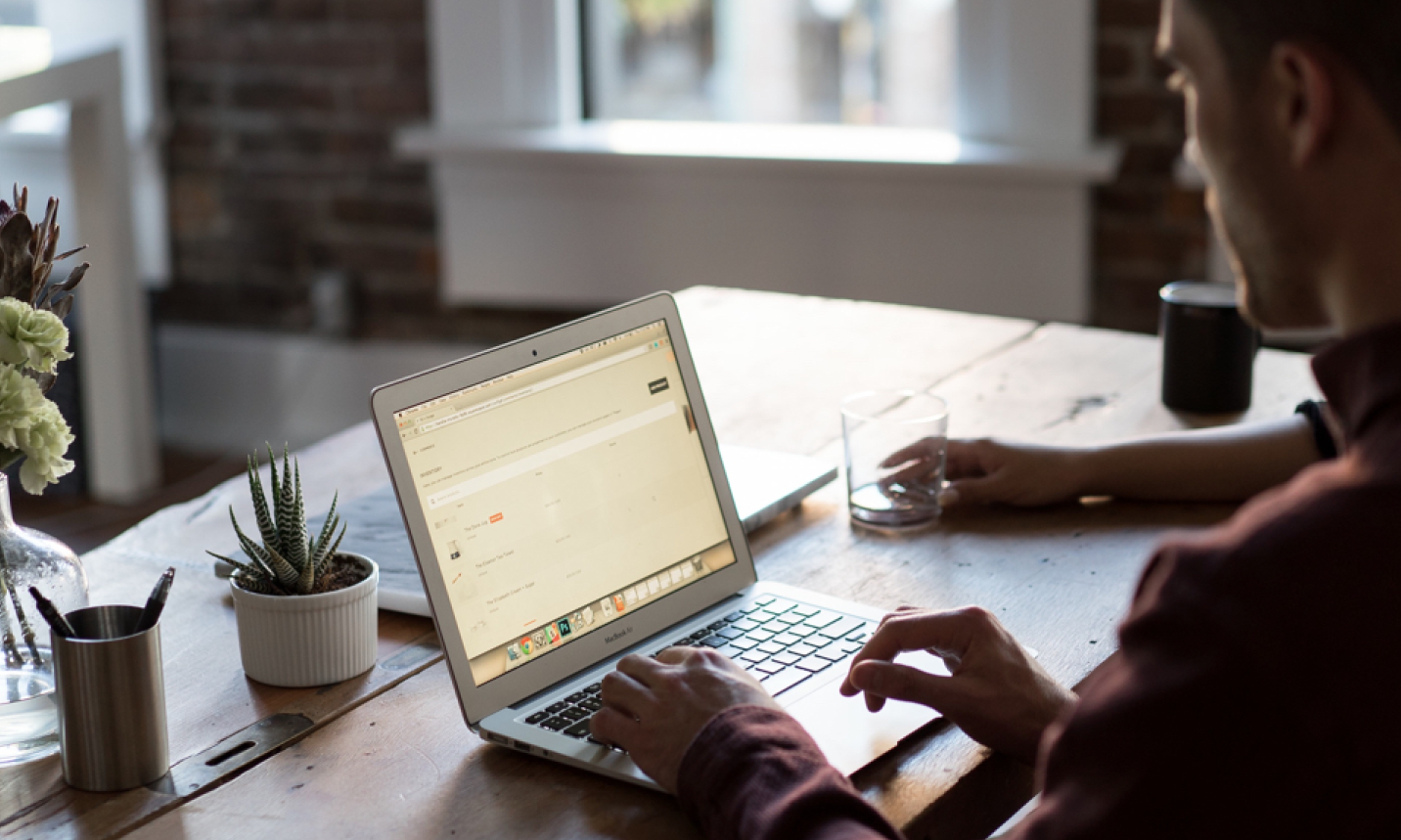
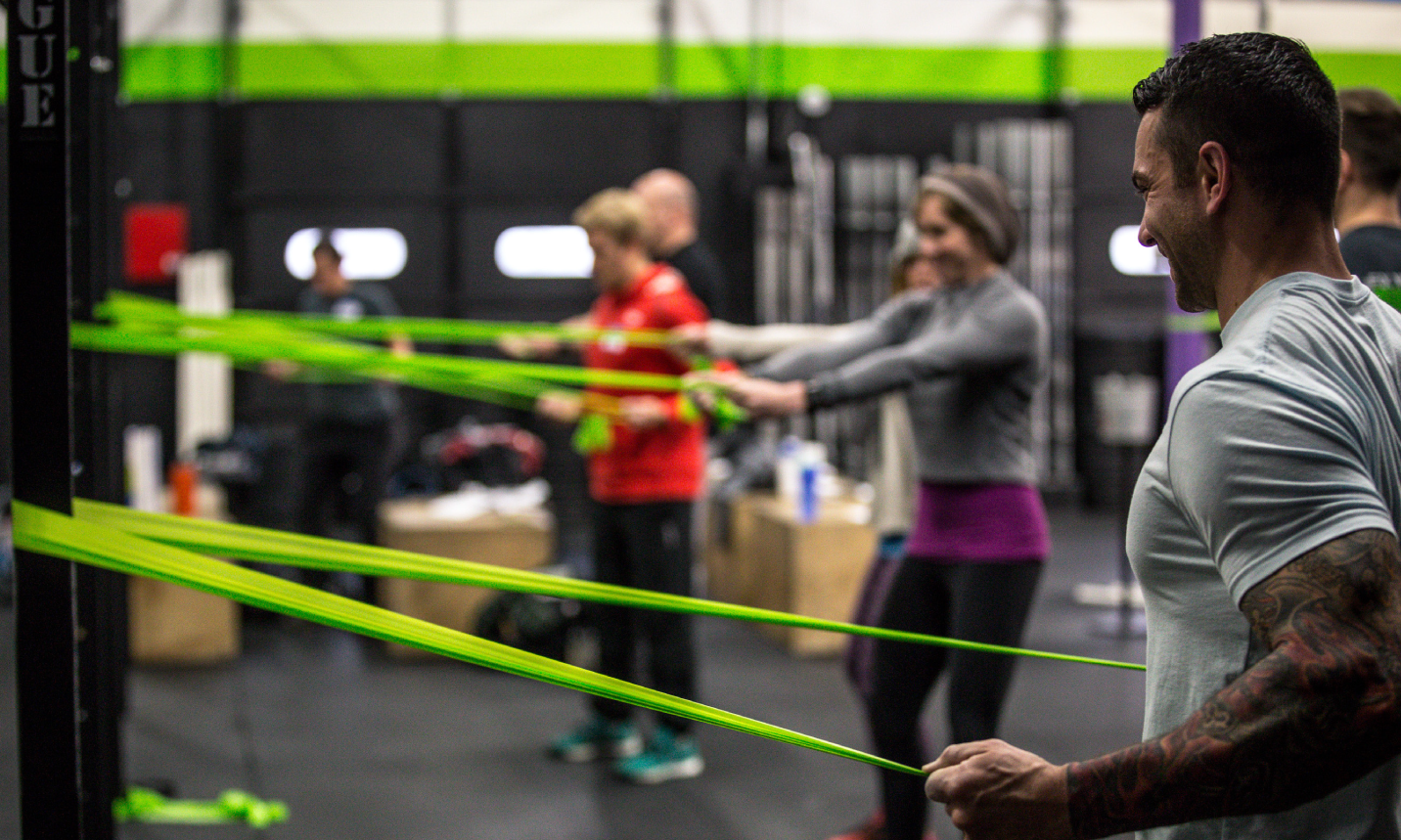
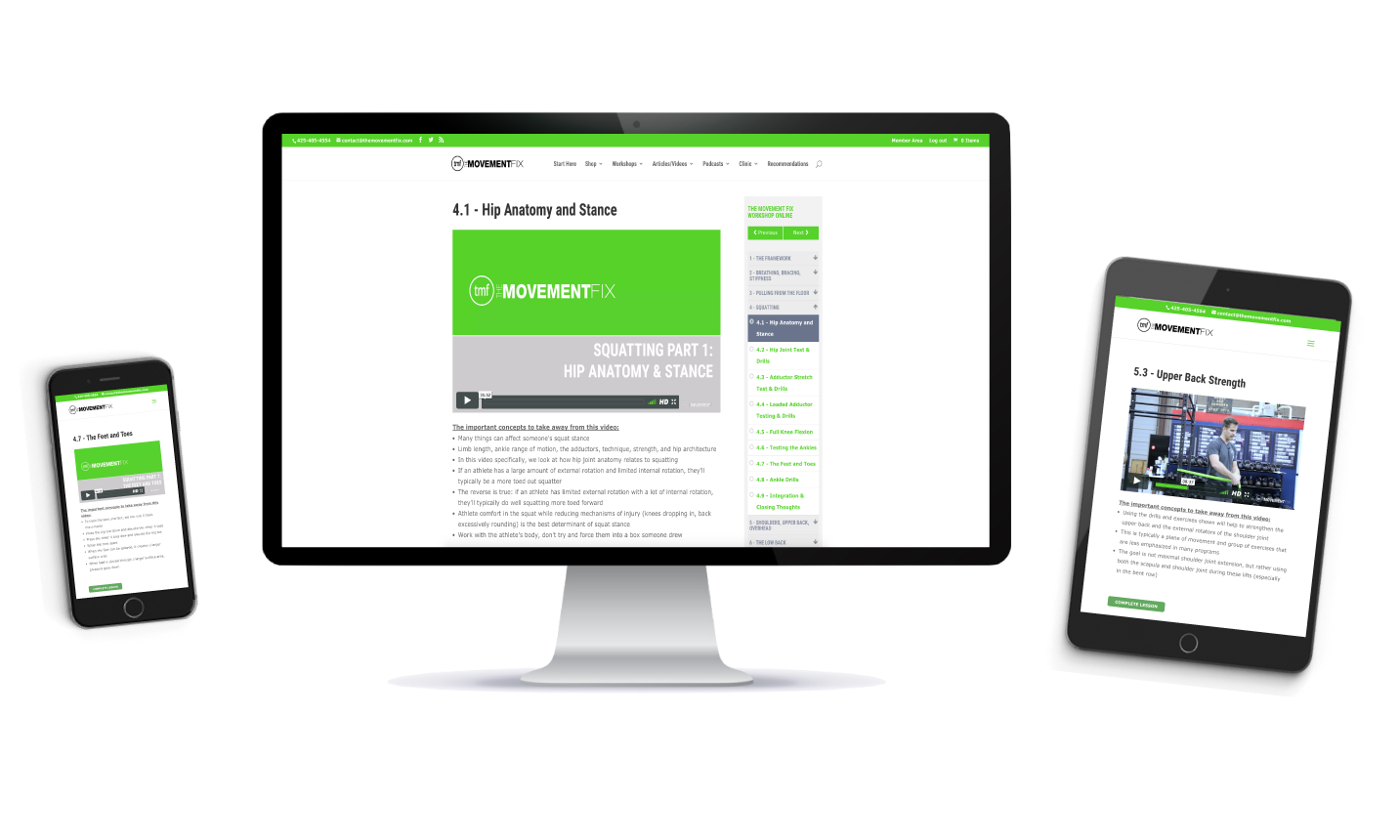
Great video and discussion on proper squatting and pistol form. Too often people neglect form to say they completed a rep and end up setting themselves up for injury. Better movement = less injury! Nice work!!
Thanks David!
Great article and video! I think the awareness is more crucial than the actual perfection. Understanding how the ankles and hips affect the lumbar joints is important and expose what people should be working on. The actual chance of injury in bw squats or pistols is pretty low considering it's unloaded. It's not that the lumbar segments and discs can't handle being flexed, it's more that we don't want them to go to END RANGE flexion, particularly under load. No reason to think that bw squats or pistols are particularly dangerous, more that practice makes permanent. Just my opinion mixed with some McGill.
Hey Conrad, thanks for reading and for the comment.
I think of the spine as loaded whenever you are weight bearing. In my mind, the spine is unloaded when you are on all 4s or lying down. When you are standing, the spine is loaded, increasing the intradiscal pressure. There is no external load in a normal air squat or unweighted pistol.
The chance of low back injury from 1 rep of an air squat or pistol is very unlikely, but the chance of developing an overuse injury of the lumbar spine exists if we are repetitively rounding the low back at a rate higher than the low back can recover from between sessions! That stuff will add up over time.
What happens 4 years down the road when someone "herniates a disc" randomly when lifting? We have to look at what was in their movement diet for the last 5 or 10 years to figure out why they go that overuse injury!
I appreciate your great question and input!
Great points Ryan. Another reason people round their back and/or lift their heel to keep from falling over backwards is that when the foot is directly under the center of mass the femur goes straight forward and back and the full length of the femur pushes the hips (and much of your mass) back further so people lean over to keep from falling back. When the feet are out wider in a two footed squat position some of the femur length is taken up by the angle so the weight isn't pushed so far back. This is why long "femured" people need a wider stance sometimes. Thanks for all you do on here and for my many athletes who have come to see you!
Just piggy backing on this comment...
With the single leg squat, you will run out of room in the hip much easier because you can't turn your leg/foot outwards. So is there any way to do a pistol squat without this happening. On an air squat, you see people sink in between their hips, but in the pistol you kind of sink onto your hip/femur. Will there always be Lumbar rounding then?
Regards,
Ruairi O'Donohoe - Physio
Hi Ryan,
Great topic and video. Could you provide me with the name of the article where after repetitive lumbar flexion produced a 17% decrease in resistance to flexion? Really appreciate your videos. Keep up the good work!
Jason
Hey Jason,
The text is hyperlinked! Clicking on it will take you there.
Thanks for reading,
Ryan
Hi Dr. Ryan,
Good day to you!
I recently came across this article and it was a really wonderful read - thank you so much! Glad that I was able to find this. The thing is, I've been doing both deadlifts and pistols for over 2 years now and yes I've been experiencing a lot of lower back discomfort during those years (sharp pain sometimes). And to be honest, I'm far from doing a pistol following the 3 main principles of squatting you just described.
Now that it was studied that "repetitive lumbar flexion produced a 17% decrease in resistance to flexion?", I'm pretty worried that I already came to that point. Is there a way that I can recover from that? I can still do decent weighted squats with proper form (following your 3 main principles, of course!) without the butt winking but right now, my lower back is very, very uncomfortable.
Perhaps you can share some insights and tips to help me recover through this?
Jess